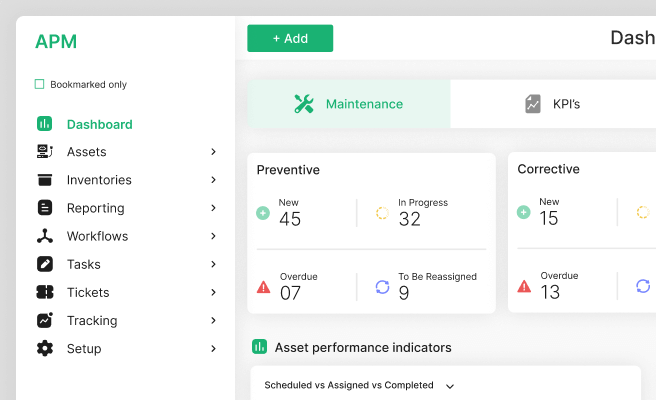Inclusive Design
<p>Inclusive design is a design philosophy aimed at creating products, environments, and experiences that are accessible and usable by as many people as possible, regardless of age, ability, or background. This approach is essential in ensuring that all users, including those with disabilities, can engage fully with a product or service.</p>
<p>Historically, design practices often catered to the "average" user, inadvertently excluding those with diverse needs. Inclusive design shifts this perspective by considering a wider range of human diversity from the outset, making products more usable and beneficial for everyone.</p>
<h2 id="importance">Importance of Inclusive Design</h2>
<p>Inclusive design is crucial for fostering equality and accessibility in the digital and physical worlds. By prioritizing inclusivity, companies can reach a broader audience, improve user satisfaction, and comply with legal requirements such as the Americans with Disabilities Act (ADA).</p>
<h3 id="components">Components of Inclusive Design</h3>
<p>Key components of inclusive design include:</p>
<ul>
<li><strong>User Research:</strong> Conducting thorough research to understand the diverse needs of potential users.</li>
<li><strong>Flexibility:</strong> Designing products that can be adapted to different user abilities and preferences.</li>
<li><strong>Simplicity:</strong> Creating intuitive and easy-to-use interfaces.</li>
<li><strong>Perceptibility:</strong> Ensuring that information is conveyed effectively through multiple sensory channels.</li>
</ul>
<h3 id="benefits">Benefits of Inclusive Design</h3>
<p>Implementing inclusive design can provide numerous benefits:</p>
<ul>
<li><strong>Enhanced User Experience:</strong> Designing for inclusivity leads to more intuitive and user-friendly products.</li>
<li><strong>Market Expansion:</strong> Inclusive products can reach a larger and more diverse customer base.</li>
<li><strong>Brand Loyalty:</strong> Companies that prioritize inclusivity often earn greater trust and loyalty from their users.</li>
</ul>
<h3 id="challenges">Challenges in Inclusive Design</h3>
<p>Despite its benefits, inclusive design can present certain challenges:</p>
<ul>
<li><strong>Complexity:</strong> Designing for a wide range of needs can increase the complexity of the design process.</li>
<li><strong>Cost:</strong> Incorporating inclusive features might require additional resources and investment.</li>
<li><strong>Education:</strong> Designers and developers need to be educated about the principles and practices of inclusive design.</li>
</ul>
<h3 id="examples">Examples of Inclusive Design</h3>
<p>Real-world examples demonstrate the impact of inclusive design:</p>
<p><a href="https://www.apple.com/accessibility/" style="color: #2896FF; text-decoration: underline;">Apple's Accessibility Features</a>: Apple integrates various accessibility features into its products, such as VoiceOver, which enables visually impaired users to navigate their devices.</p>
<p><a href="https://www.microsoft.com/en-us/accessibility" style="color: #2896FF; text-decoration: underline;">Microsoft Inclusive Design Toolkit</a>: Microsoft's toolkit provides guidelines and resources for creating products that cater to a diverse user base.</p>
<p><a href="https://www.tesla.com/blog/introducing-climate-control" style="color: #2896FF; text-decoration: underline;">Tesla's Climate Control System</a>: Tesla's voice-activated controls allow users with physical impairments to adjust their vehicle's settings easily.</p>
<h2 id="implementing">Implementing Inclusive Design</h2>
<p>To implement inclusive design effectively, follow these steps:</p>
<p><strong>1. User Research:</strong> Gather insights from a diverse group of users during the research phase.</p>
<p><strong>2. Collaboration:</strong> Involve accessibility experts and users with disabilities in the design process.</p>
<p><strong>3. Prototyping and Testing:</strong> Create prototypes and conduct usability tests with diverse user groups to identify and address potential accessibility issues.</p>
<p><strong>4. Continuous Improvement:</strong> Regularly update and improve your designs based on user feedback and evolving accessibility standards.</p>
<h3 id="tools">Tools for Inclusive Design</h3>
<p>Several tools can assist designers in creating inclusive products:</p>
<p><a href="https://www.sketch.com/" style="color: #2896FF; text-decoration: underline;">Sketch</a>: A design tool that includes plugins for accessibility testing and improvements.</p>
<p><a href="https://www.adobe.com/products/xd.html" style="color: #2896FF; text-decoration: underline;">Adobe XD</a>: Offers features for designing and prototyping with accessibility in mind.</p>
<p><a href="https://www.figma.com/" style="color: #2896FF; text-decoration: underline;">Figma</a>: Supports collaborative design and includes plugins for checking color contrast and other accessibility metrics.</p>
<h2 id="conclusion">Conclusion</h2>
<p>Inclusive design is essential for creating equitable, accessible, and user-friendly products. By considering the diverse needs of all users, businesses can enhance user experiences, expand their market reach, and build stronger brand loyalty. To learn more about implementing inclusive design in your projects, explore resources from organizations like <a href="https://www.w3.org/WAI/" style="color: #2896FF; text-decoration: underline;">W3C Web Accessibility Initiative</a>.</p> <p>Increase user engagement that converts your demos into sales. Optimise your UX strategies with our audits.
<p>Fill out the <a href="https://tally.so/r/n97pxQ" style="color:#2896FF; text-decoration:underline;">UX Audit form</a> to get started. Ready to discuss your needs? <a href="https://cal.com/akhilak/what-if-design?duration=25" style="color:#2896FF; text-decoration:underline;">Book a consultation call</a> with us today.</p></p>

Let's scale your impact with great design.
Free consultation, no sales pitch
Thank you! Your submission has been received!
Oops! Something went wrong while submitting the form.
Let’s talk
Nothing great is built alone.
Let’s connect about your vision, our work and how we can collaborate.
Get in touch

